The advertising ecosystem is a broad entity made up of many different processes and platforms, and just as many acronyms. One of its most influential additions over the past decade has been the introduction of Real-Time Bidding (RTB).
One of the most influential additions to the advertising ecosystem over the past decade has been demand-side platforms (DSPs).
What Is A Demand-Side Platform (DSP)?
A demand-side platform (DSP) is an advertising technology (AdTech) platform that allows advertisers working at brands and ad agencies to buy inventory (aka ad space) on an impression-by-impression basis from publishers via supply-side platforms (SSPs) and ad exchanges. DSPs enable media buyers (advertisers and agencies) to purchase a range of inventory from many different publishers all from one user interface.
An easy way to understand how DSPs operate is to think of them as stockbrokers. In the same way investors use stockbrokers to purchase stock from companies via the stock exchange, media buyers use DSPs to purchase ad inventory from publishers through the ad exchange.
Demand-side platforms started to emerge in 2007 when real-time bidding began. Back then, most of the inventory purchased was for web browsers in desktops and laptops, but DSPs nowadays allows media buyers to purchase inventory programmatically across a range of devices (e.g. smartphone and tablets) and mediums, including mobile, video, and native.
A DSP is essentially a middle man, but they are responsible for far more than just the purchasing of available inventory.
Here are some of the main functions DSPs provide media buyers:
- Create, run and manage a number of campaigns simultaneously across multiple SSPs and ad exchanges and control them from a single, centralized user interface.
- Auto-optimize (via algorithms) the campaigns to increase ROIs.
- Use 3rd-party data from DMPs to improve targeting.
- Provide real-time reporting via advanced analytics.
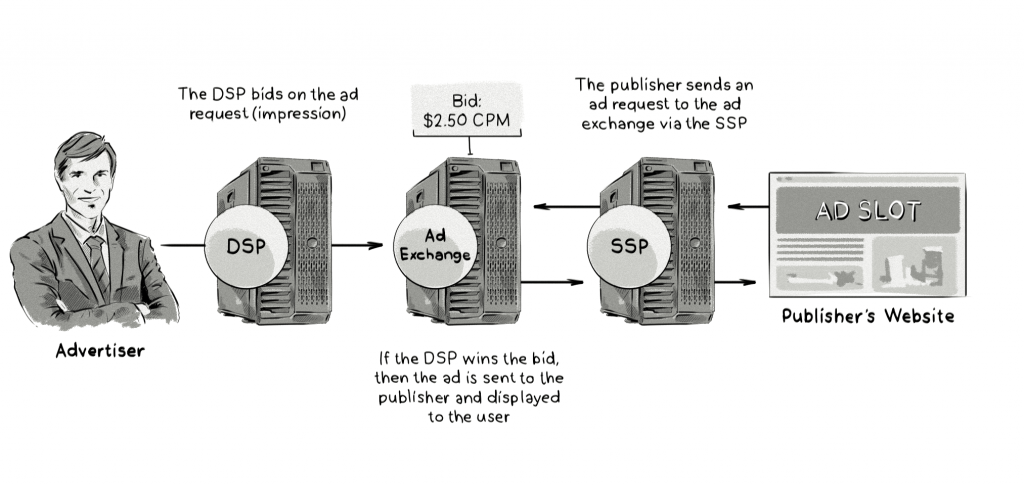
How Do Demand-Side Platforms (DSPs) Work?
Once an advertisers has set up their campaigns in a DSP, including targeting and creatives (ads), the DSP then bids on impressions offered by ad exchanges and SSPs. So each time a DSP receives a request from an ad exchange or SSP telling it that there is an impression available, the DSP analyzes the data about the user and decides how much this particular user is worth based on their relevance to the media buyer.
Let’s look at this a bit more through the use of an example:
A user, who is about 30 years old and a big sports fan living in New York, accesses a website. The website sends an ad request to the supply-side platform (SSP), which then sends the request to the ad exchange. The ad exchange then tells the DSPs that an impression is available on a website and starts the bidding process.
Let’s take a step back for a moment and imagine the DSPs have the following targeting parameters set up:
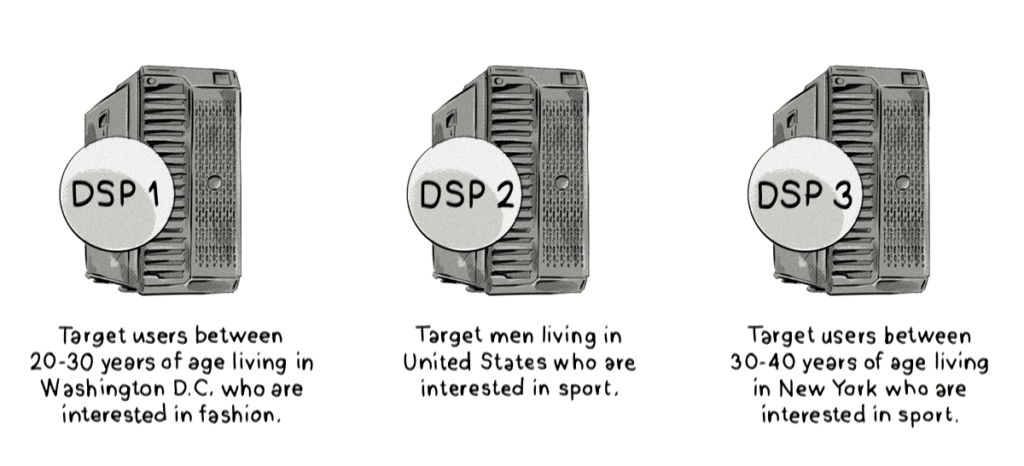
While all of the above DSPs could potentially gain something out of displaying their ad to the user, it is DSP 3 that would gain the most from this ad, as the user fits the target audience perfectly.
As a result, the DSPs would evaluate the ad, match it against their data and target parameters, and would bid on the impression based on this information. In this case, the bidding would probably look something like this:
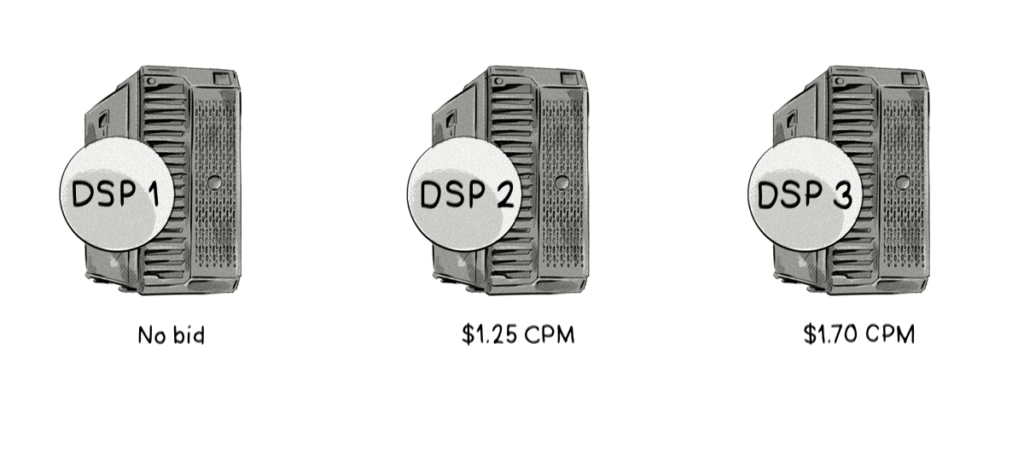
(CPM = cost per mille, the common unit in advertising, which means cost per thousand impressions. The actual cost of the bid is 1/1000 the cost of the CPM price, as the advertiser is bidding on a single impression, not purchasing a thousand impressions at once.)
Traditionally, ad exchange and SSPs transact using the second-price auction model. In other words, the winner pays the second highest bid price for the impression plus $0.01.
However, over the past few years, the auction dynamics of RTB transactions has changed slightly, with some ad exchanges and SSPs incorporating a first-price auction model.
We’ve written about the different auction dynamics here and here.
Once an impression is sold, it is sent back to the website and is displayed to the user. This process occurs each time a user accesses a website or refreshes the page.
It’s important to note that this bidding process happens within the ad exchange or SSP in real time, hence the name real-time bidding, and takes roughly 100 milliseconds to complete.
We Can Help You Build a Demand-Side Platform (DSP)
Our AdTech development teams can work with you to design, build, and maintain a custom-built demand-side platform (DSP) for any programmatic advertising channel.
What Are the Main Components Of a Demand-Side Platform?
While no two DSPs are exactly the same, most will include the same types of components.
Here’s a visual representation of the main ones:
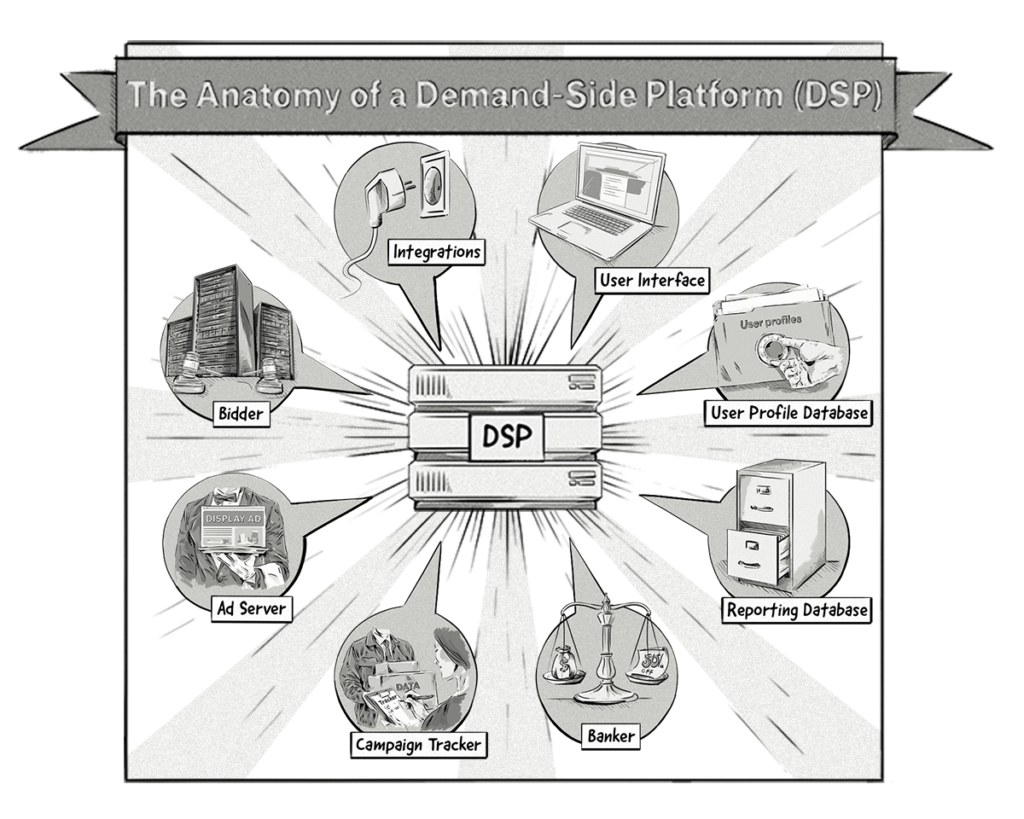
We explain what these components do in one of our previous posts.
What Advantages Do DSPs Offer Media Buyers?
DSPs traditionally were used as a way to buy remnant (unsold) inventory from publishers, but they are now becoming a way of purchasing available and even premium inventory.
The main reason for this shift in purchasing methods is due to the numerous advantages DSPs provide media buyers. Here are some of the main benefits:
- The opportunity to reach audiences on a lateral and bilateral basis (i.e. they can reach their target audience more effectively plus reach a wider audience).
- The ability to access a larger amount of available inventory and display their ad on a larger number of websites by connecting to a variety of ad exchanges and SSPs.
- Media buyers can manage and optimize the efficiency of their campaigns by adjusting the settings. Examples include: blacklisting certain websites & audiences, putting limits on the number of times the same ad is displayed to the same user within a determined time frame (frequency capping), retargeting across multiple ad exchanges, and behavioral profiling.
- The ability to react in real-time to certain outside conditions such as weather, news, stock market activity, allowing the media buyer to serve the most relevant advert to the user.
- The option to integrate 3rd-party data brokers and data management platforms into the DSP to allow media buyers to further optimize their audience targeting capabilities.
The rapid uptake of RTB has seen the number of DSPs dramatically increase over the recent years and with the opportunity to build DSPs that incorporate new integrations and advanced features & technology, their popularity is set it increase even further.
How Does Targeting Work In a DSP?
There are a number of ways an advertiser can run targeted ad campaigns with a DSP, but at the heart of it all is data.
For example, an advertiser could target users based on the following data:
Behavioral data: Includes information about the user’s behavior and interests, such as which websites they’ve visited, what products they’ve purchases, which ads they’ve interacted with, etc.
Contextual data: Includes information about the website or mobile app, such as URL, categories, and the content on the page.
Demographic data: Includes information about the user’s location, age, job title, gender, and so on.
But how does a DSP access these types of information?
Typically, behavioral and demographic data would need to be imported from a third-party data broker or DMP, which would have been collected from a range of online and offline sources. The DSP would sync cookies with the DMP to exchange user data, which can then be used for targeting.
Other types of data, such as contextual data or even user agent data (e.g. browser type, device advertising ID and operating system), are usually passed along during the bid request from the ad exchanges or SSPs.
Who Are the Main DSP Companies?
Over the past decade, dozens of DSP companies have entered the AdTech landscape, with many specializing in specific areas, such as video or native.
Below are some of the most well-know DSP companies:
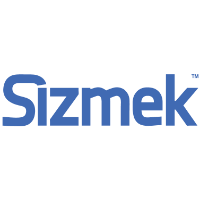
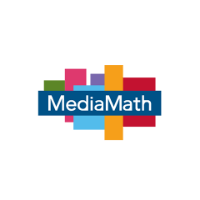
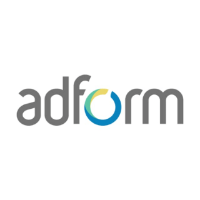
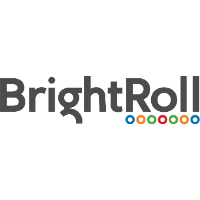
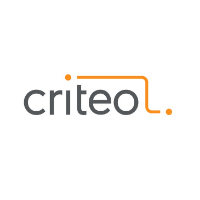

The Benefits of Building a Custom Demand-Side Platform (DSP)
While there are a number of DSPs companies on the market that offer a range of features for advertisers and agencies, there are a number of benefits in developing your own custom DSP:
Ownership of data and technology: By building a custom DSP, you can gain control of both the technology and data. This is particularly beneficial for advertisers with large advertising campaigns and agencies that purchase large amounts of inventory on behalf of their clients.
Elimination of white-label fees and commissions: While building your own custom DSP won’t eliminate all of the fees and commissions involved in the online media transactions, it will certainly eliminate the known fees and commissions associated with using white-labeled solutions, which can be quite a costly expense for a lot of media buyers.
Control of the product’s roadmap: Most DSPs come packed with features, but they are often not a one-size-fits-all platform. For brands and agencies with specific use cases, developing a DSP enables them to have full control over the product’s roadmap and build the features that they want and need.
We Can Help You Build a Demand-Side Platform (DSP)
Our AdTech development teams can work with you to design, build, and maintain a custom-built demand-side platform (DSP) for any programmatic advertising channel.








